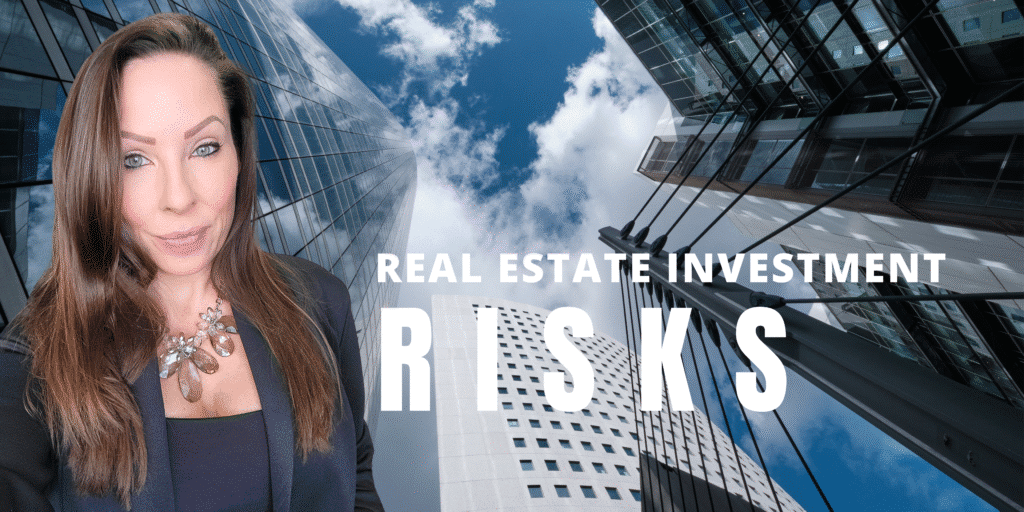
Why Have So Many Operators Gone Bankrupt In The Last 2 Years?
Real estate has long been considered one of the most powerful vehicles for building wealth.
But let’s be honest—this asset class is not without its risks. The past 12–24 months have been a brutal reminder of just how quickly things can unravel, especially when the market shifts, debt gets expensive, and operators overextend.
If you’re investing in real estate—or thinking about it—you need to understand the risks, the red flags, and the lessons from recent high-profile collapses in both Canada and the U.S.
So let’s unpack what went wrong, why so many real estate operators have gone insolvent, and how you can protect yourself whether you’re investing actively or passively.
What Went Wrong: A Perfect Storm
The real estate market of 2021 and early 2022 was intoxicating. Cheap money. Rapid appreciation. Bidding wars. Investor FOMO. But when interest rates skyrocketed starting in March 2022, the cracks began to show.
Many operators had built their business models around:
- Short-term bridge debt with variable rates
- Assumptions of continued appreciation or high rent growth
- Minimal contingencies for rising costs
- Aggressive scaling without fundamentals
When these assumptions failed to hold up, so did the investments.
Why So Many Operators Went Bankrupt
Let’s break it down.
1. Rising Interest Rates Crushed Variable Debt
Between March 2022 and mid-2024, the Bank of Canada raised its benchmark interest rate from 0.25% to 5%. In the U.S., the Fed did the same. This crushed variable-rate mortgages and bridge financing.
Operators who were carrying large multifamily or commercial portfolios suddenly found their mortgage payments had doubled or tripled.
🛑 Example: District REIT (Canada)
District REIT, which promised 8–10% annual returns, announced in 2023 that they were suspending distributions and divesting assets due to debt obligations. Investors were blindsided as they discovered how thin the margin for error really was.
2. Debt Maturity & Refinance Risk
Many value-add operators planned to refinance after a 12–24 month renovation timeline. But when those loans came due in 2023–2024, lenders pulled back, LTVs dropped, and cap rates increased. Operators couldn’t refinance at favourable terms—or at all.
🛑 Example: Tzadik Properties (U.S.)
In early 2024, this once-high-flying multifamily firm defaulted on a $200M+ loan portfolio. Their strategy was based on buying distressed assets in secondary markets and using short-term debt. The spike in rates and decrease in valuations left them without an exit.
3. Construction Delays and Cost Overruns
Development-focused groups were particularly hard hit. Delays, labour shortages, and materials inflation pushed many projects beyond their original budgets. Combined with higher financing costs, many builds simply stopped mid-project.
🛑 Example: Fortress Real Developments (Canada)
Although this collapse started earlier, Fortress serves as a cautionary tale. Their syndicated mortgage strategy left many retail investors with massive losses when developments never materialized. Projects like Unionville’s Kennedy Rd site sat vacant for years.
4. Overpromising Returns to Passive Investors
Many passive investors were promised “safe” 15–20% IRRs and monthly distributions. But when deals stopped cash flowing, operators had to pause distributions or raise capital—sometimes with no clear end in sight. In some cases, they were using investor capital to pay distributions (Ponzi-style).
🛑 Example: Nightingale Properties (U.S.)
This firm collapsed in 2023 after raising $50M+ from investors through online crowdfunding platforms. Funds were misappropriated, investor money was unaccounted for, and lawsuits followed.
Top Risks for Investors to Watch
Whether you’re hands-on or completely passive, here’s what to be aware of:
🔸 1. Interest Rate Risk
Never underestimate the impact of rising rates on both your cash flow and exit strategy. Lock in fixed rates when possible and stress-test deals at higher rates.
🔸 2. Operator Risk
You’re not just investing in a property—you’re investing in the people running it. Ask:
- Have they successfully navigated a down cycle before?
- Do they have skin in the game?
- Are they transparent with communication?
🔸 3. Illiquidity
Unlike stocks, real estate investments can’t be sold overnight. Your money is tied up for 3–10+ years. Be sure you can afford to wait.
🔸 4. Market Risk
Investing in booming or speculative markets can offer high upside—but also higher volatility. Look at job growth, population trends, and affordability in the region.
🔸 5. Overleverage
Borrowing more doesn’t always mean better returns. When debt service eats up cash flow, even small bumps can sink a deal.
🔸 6. Legal Structure and Investor Protections
Are you buying shares, units in a trust, or part of a limited partnership? Each structure comes with different rights—and risks. Make sure you understand what recourse you have if something goes wrong.
Lessons for Passive Investors
- Due diligence is not optional. Read the legal docs. Ask questions. If you don’t understand the capital stack, fees, or exit strategy—don’t invest.
- Look for conservative underwriting. Operators should project modest rent growth and plan for worst-case scenarios.
- Ask for recent investor updates. If updates are sporadic, vague, or overly polished, that’s a red flag.
- Partner with proven operators. Look for those with long-term track records, skin in the game, and crisis management experience.
- Watch your allocations. Don’t put more than 5–10% of your net worth into any single project or operator.
For Active Operators: Heed the Warning
If you’re actively running deals, this is your reminder:
✅ Underwrite with humility
✅ Keep your investors informed—even when it’s uncomfortable
✅ Build cash reserves
✅ Don’t chase scale at the expense of fundamentals
Caution Is the New Smart
Real estate is a powerful wealth-building tool—but it’s not magic. The last 2 years have exposed just how fragile some of the popular strategies really were.
Yes, you can still find good deals. Yes, there’s opportunity. But only if you’re ruthlessly disciplined and grounded in reality.
This isn’t the time to speculate—it’s the time to strategize.
👀 Want to Learn More or Invest Safely?
If you’re considering investing passively and want to work with vetted operators using risk-managed strategies, I’d be happy to share opportunities I’ve personally vetted—like SHARE’s done-for-you investing program or working with M1 Real Capital where we focus on building wealth sustainably.
Sources & Further Reading:
- Bank of Canada Interest Rate History: https://www.bankofcanada.ca/rates/interest-rates/
- Globe & Mail on District REIT: https://www.theglobeandmail.com/business/article-district-reit-suspends-payouts/
- Tzadik Properties Collapse: https://therealdeal.com/2024/03/15/tzadik-faces-foreclosure-on-200m-multifamily-portfolio/
- Fortress Real Collapse Timeline: https://www.cbc.ca/news/business/fortress-real-collapse-1.6112763
- Nightingale Crowdfunding Scandal: https://www.businessinsider.com/nightingale-crowdfunding-fraud-lawsuit-laws-investors-2023-9










